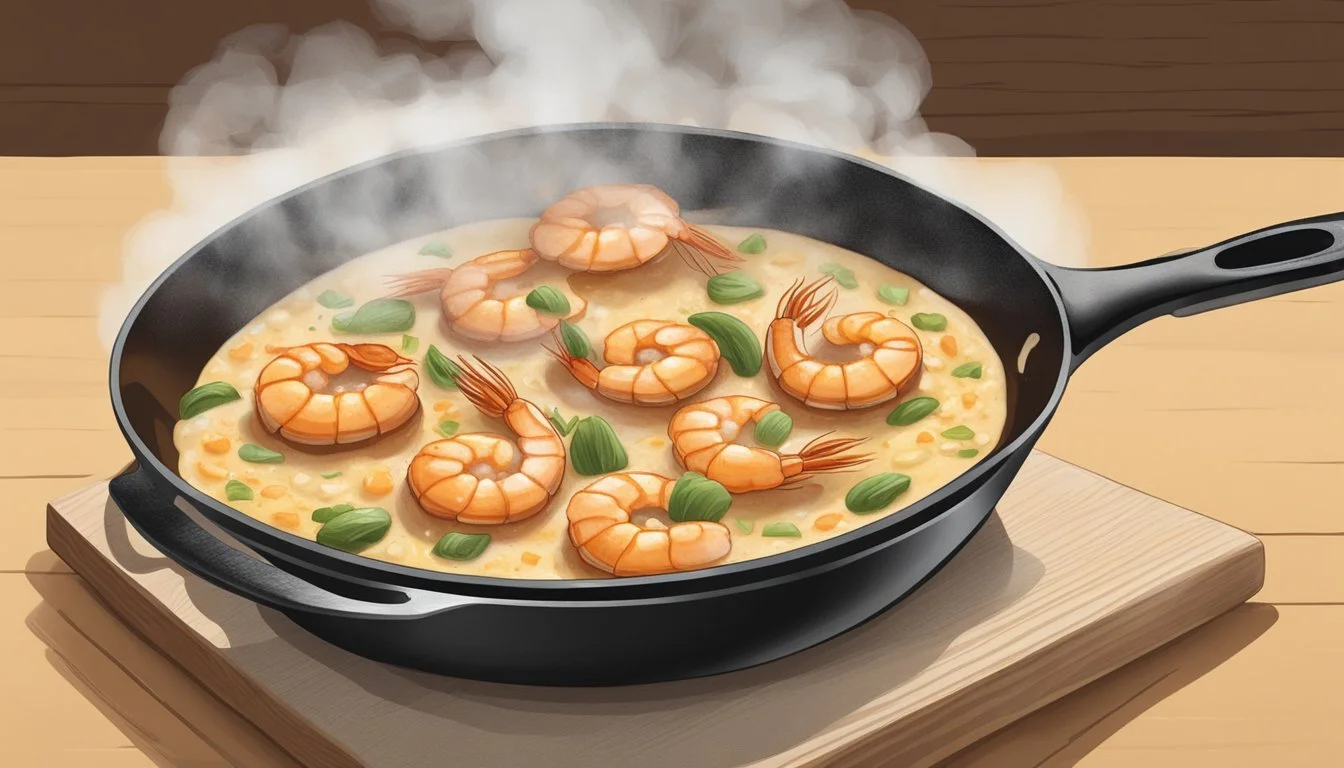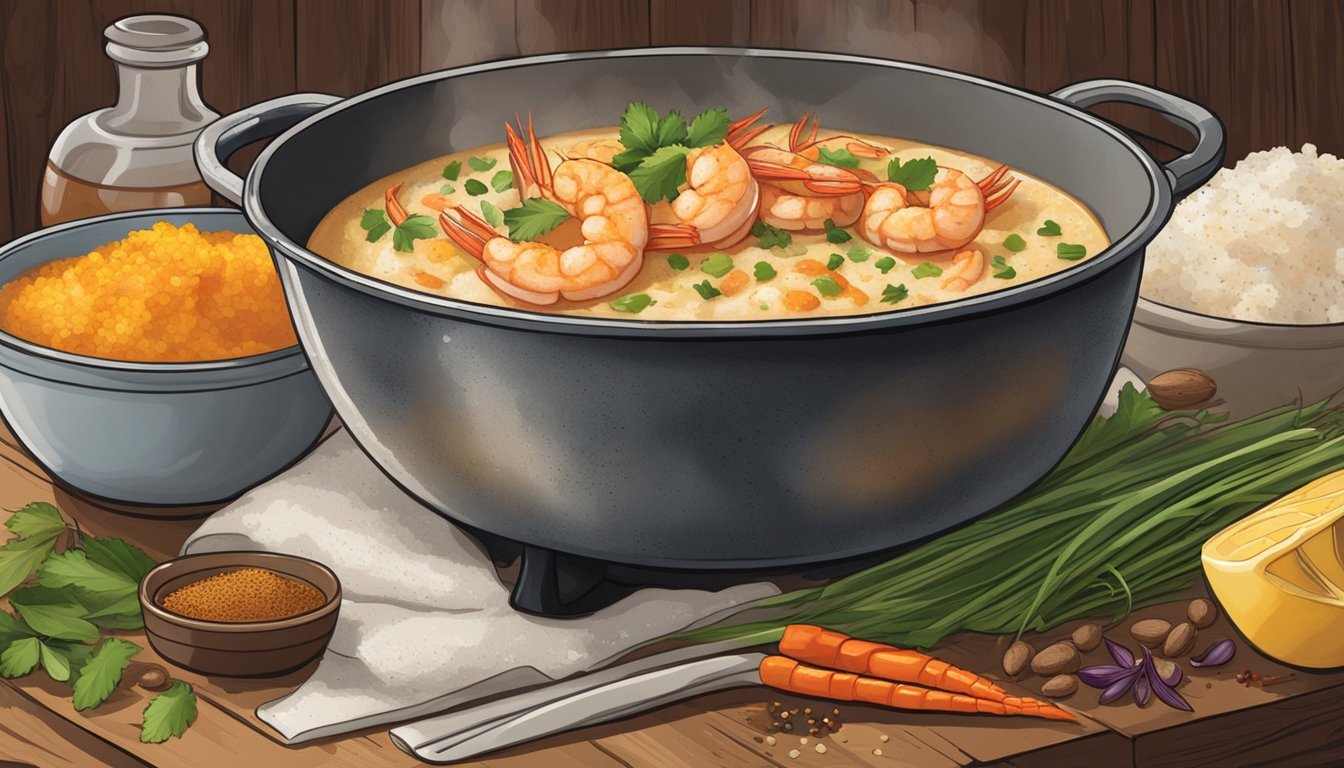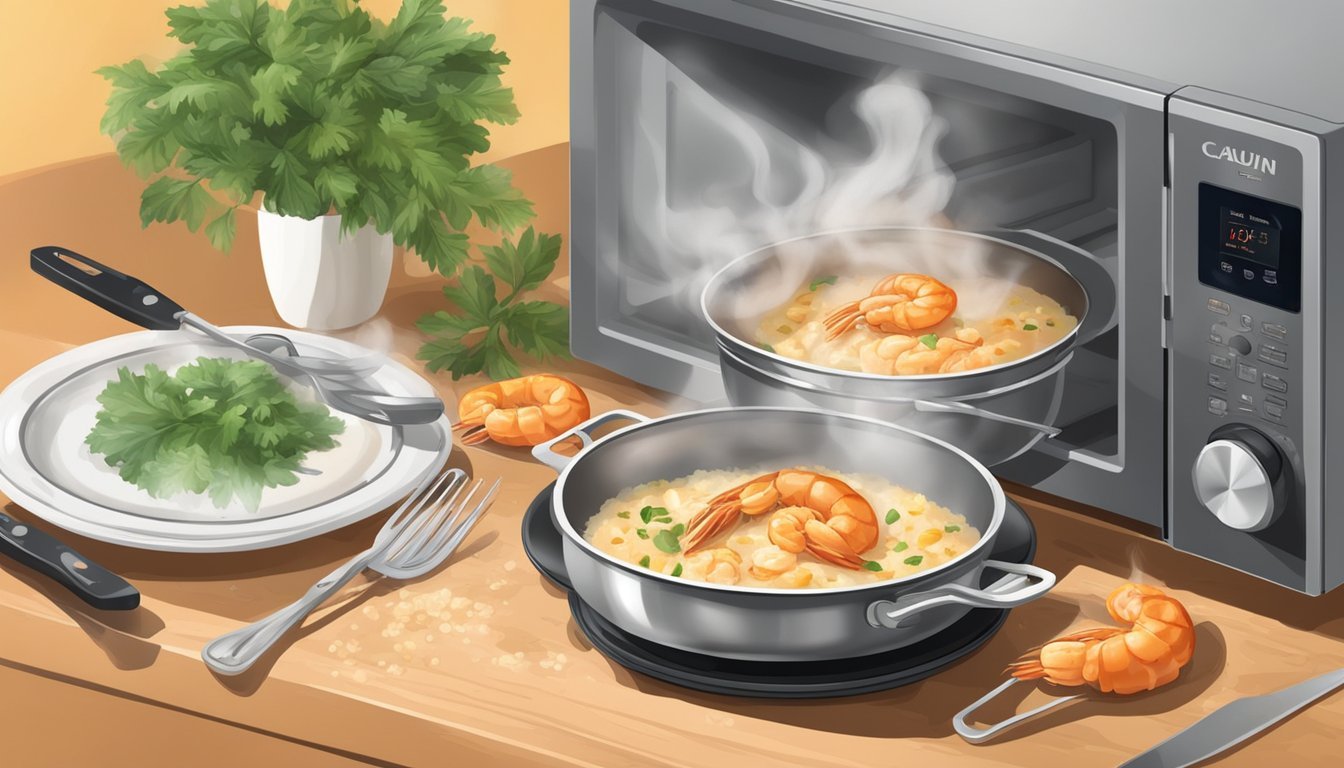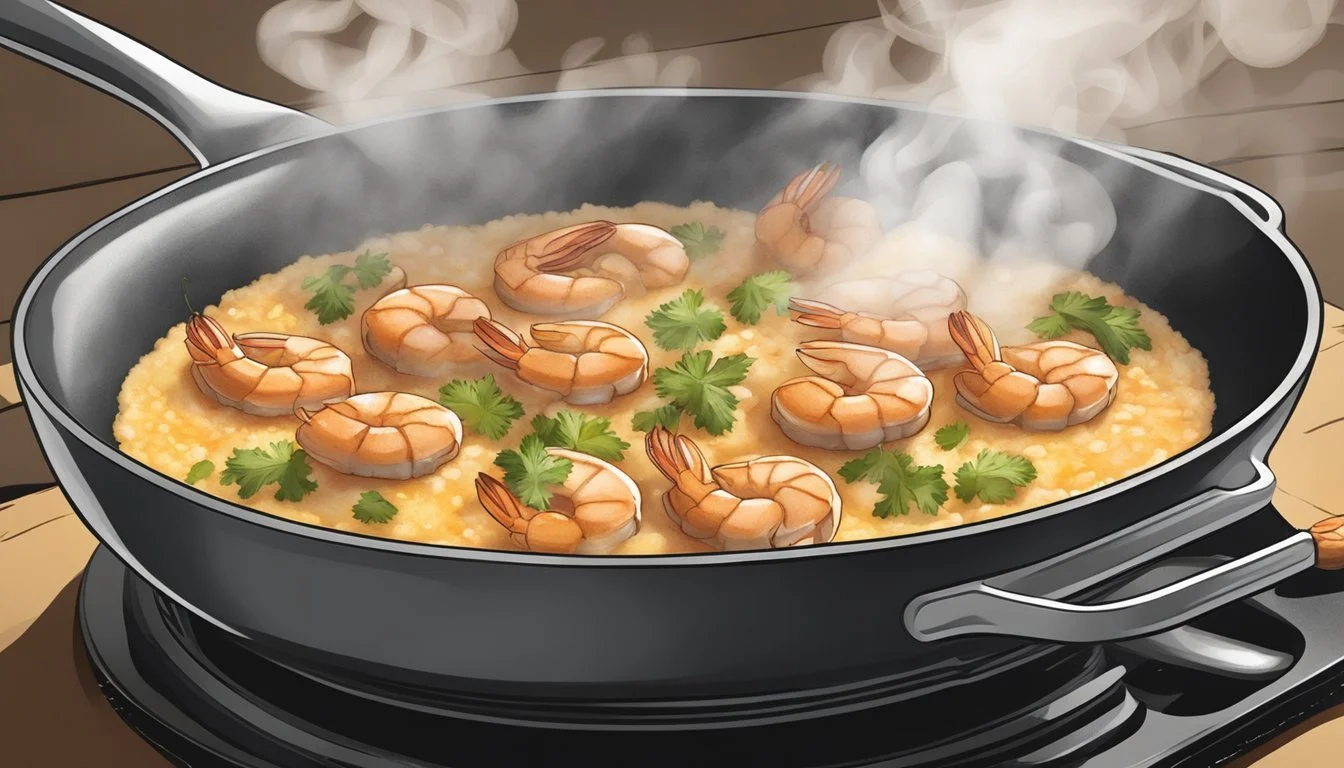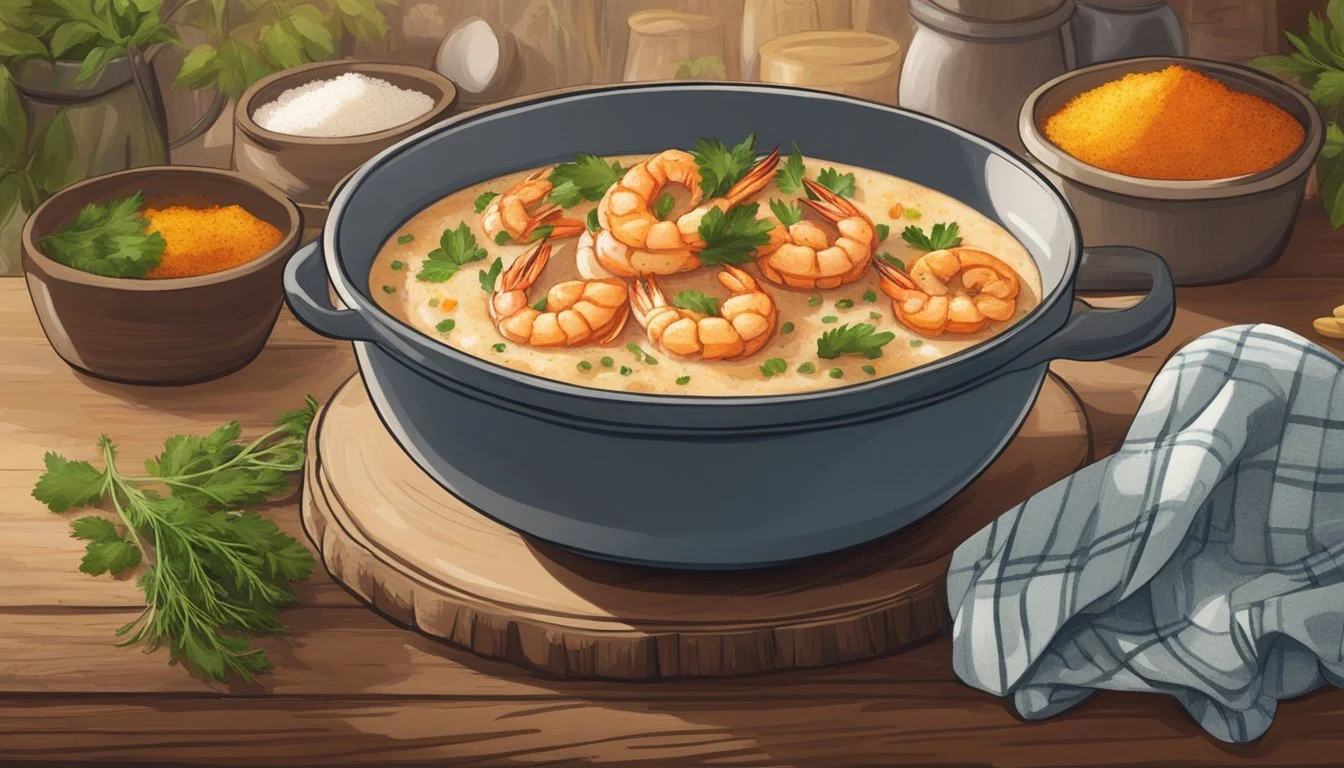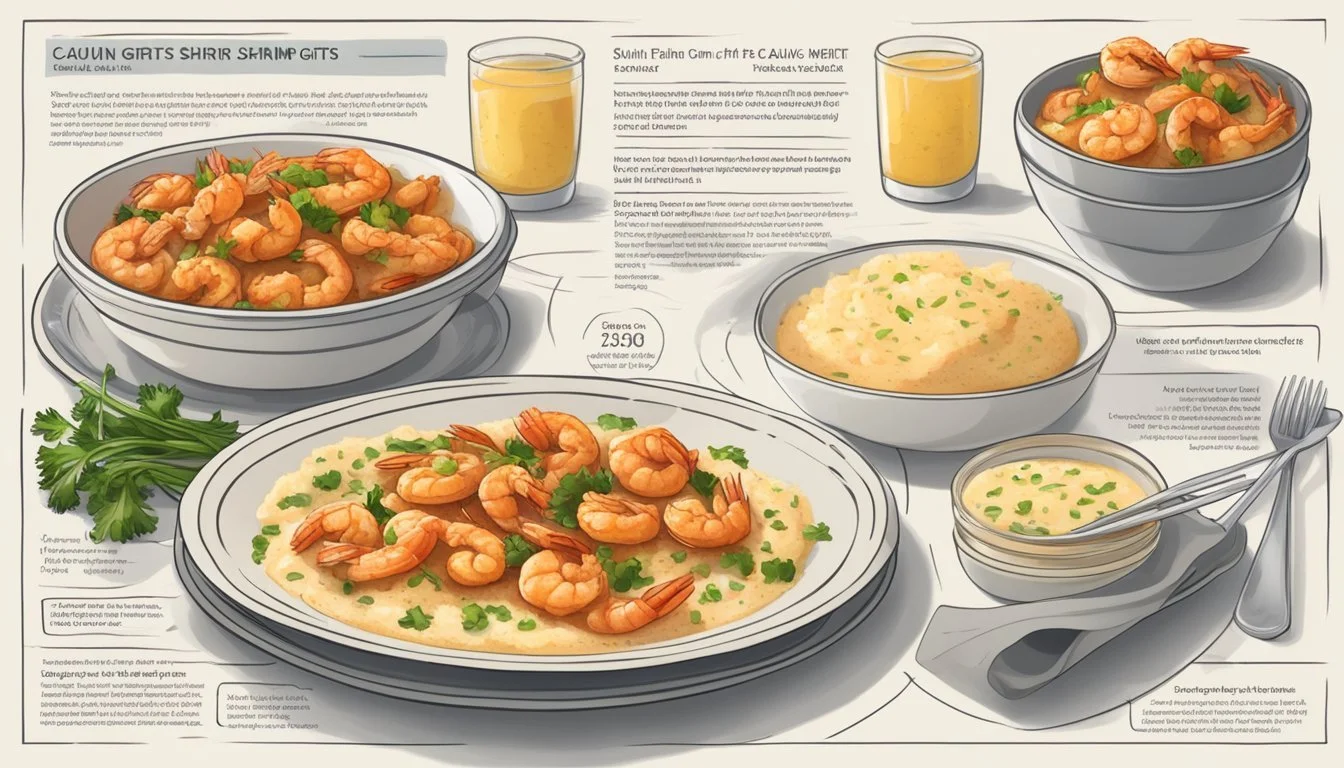How to Reheat Cajun Shrimp and Grits for Optimal Flavor
Reheating Cajun shrimp and grits to perfection is an art that ensures you can enjoy this classic southern dish just as much the second time around. This Southern comfort food, known for its creamy, cheesy grits and spicy shrimp, can lose its ideal texture and flavor if not reheated properly. To reheat shrimp and grits, warm them separately; shrimp should be heated in a skillet over medium-high heat, while grits can be loosened with a splash of milk or broth and reheated slowly.
For those who savor the flavor and texture of their Cajun shrimp and grits, paying attention to the reheating process is key. Shrimp can become rubbery if overheated, so gentle reheating ensures they retain their tenderness. Grits, on the other hand, often thicken when stored, requiring a bit of liquid to restore their creamy consistency.
Enjoying this hearty Southern comfort food at its best, even the next day, is entirely possible with these simple techniques. By following these expert tips, your leftover Cajun shrimp and grits will taste as delicious and satisfying as when first prepared.
Understanding Cajun Shrimp and Grits
Cajun shrimp and grits is a traditional Southern dish combining creamy grits with savory, seasoned shrimp. Its ingredients and cultural roots make it a unique and popular recipe.
Ingredients Breakdown
The main components of Cajun shrimp and grits include shrimp, grits, butter, cheese, and various seasonings.
Shrimp: Often seasoned with a Cajun seasoning blend, lending a spicy kick.
Grits: Made from ground corn, grits are a creamy base, usually cooked with chicken stock for added flavor.
Butter and Cheese: These add richness and a smooth texture, with cheese varieties like parmesan commonly used.
Seasonings: Cajun seasoning, garlic, and onions. Sometimes includes andouille sausage and bell peppers for a savory depth.
The dish is cooked by simmering the grits until creamy and sautéing the shrimp until they turn pink.
The Cultural Significance
Originating from the Southern United States, this dish symbolizes Southern hospitality and is a staple in Louisiana cuisine, particularly New Orleans.
Historical roots: Combining African, French, and Spanish influences.
Cultural Impact: Represents the flavor-profile of the region with bold spices. Known for its simplicity and heartiness.
Popularity: Found in Southern breakfast menus and often served in both humble home kitchens and upscale restaurants.
Cajun shrimp and grits showcase a blend of flavors and cultural heritage, making it a beloved part of Southern food traditions.
Preparation Essentials
Reheating Cajun shrimp and grits effectively revolves around managing time and choosing quality ingredients. Each step is crucial for ensuring the dish retains its delicious flavor and texture.
Timing and Scheduling
Timing is key when reheating Cajun shrimp and grits. Whether using an oven, microwave, or stovetop, consider the total prep time and serving size. For instance, using an oven at 350°F (175°C) will take around 15-20 minutes, while a microwave can be quicker, often heating in intervals of 1-2 minutes.
Scheduling the reheating process ensures the shrimp remains juicy, and the grits stay creamy. For larger servings, the oven method is ideal, maintaining moisture with a splash of broth or water, and covering with aluminum foil to trap steam.
Sourcing Quality Ingredients
Quality ingredients elevate the dish. Always opt for fresh shrimp and high-quality grits. Quick-cooking grits are convenient, but stone-ground grits offer a more authentic texture. Choose kosher salt for its purity.
When reheating, a bit of cheese melted into the grits can add richness. Also, using broth instead of water for moisture enhances the flavor. For those using the stovetop, a tablespoon of butter helps in reheating the shrimp, ensuring they stay tender and delicious.
Proper attention to timing and ingredient quality ensures your reheated Cajun shrimp and grits are just as delightful as the fresh dish.
Initial Cooking Tips
To create a delicious Cajun shrimp and grits dish, it's essential to focus on achieving a creamy texture in the grits and perfectly seasoning the shrimp for a balance of flavors.
Achieving the Creamy Texture
Creamy grits are the foundation of a great shrimp and grits dish. Start by using quality ingredients such as stone-ground grits and whole milk. A mix of stock (chicken or vegetable) and milk creates depth of flavor.
Cook the grits slowly over low heat, stirring frequently to prevent clumping. This technique helps release the starches, yielding a smooth, creamy texture.
Incorporate butter, preferably unsalted, towards the end of cooking for added richness. Cheesy grits can be made by stirring in freshly grated cheddar cheese or parmesan cheese. Use fresh cheese for optimal melting and flavor.
Adjust the consistency with extra stock or milk, aiming for a creamy but not runny texture. Season liberally with salt and add a touch of black pepper for warmth.
Seasoning the Shrimp Perfectly
Seasoning the shrimp enhances the bold flavors typical of Cajun cuisine. Begin with fresh shrimp, cleaned and deveined.
For a classic Cajun seasoning, mix paprika, cayenne pepper, garlic powder, onion powder, dried thyme, and oregano. Lightly coat the shrimp with this blend, adding a sprinkle of salt.
Heat a pan over medium-high heat with a splash of oil and a pat of butter. Cook the seasoned shrimp for 2-3 minutes on each side until pink and opaque.
For a richer flavor, deglaze the pan with a little stock or wine, creating a sauce to drizzle over the shrimp and grits.
Carefully manage seasoning levels to ensure no single spice overpowers the dish, maintaining a harmonious balance.
Reheating Methods Explored
Reheating Cajun shrimp and grits can be done efficiently using a skillet, microwave, or oven. Each method has its own steps and important considerations to ensure the dish remains delicious and moist.
Using a Skillet
Reheating shrimp and grits in a skillet allows for precise control over the heat and moisture. Start by melting a tablespoon of butter in the skillet over medium heat. Add the shrimp and grits, gently stirring to mix them with the melted butter. If the grits seem dry, add a splash of water or broth.
Lower the heat to avoid burning and allow the ingredients to warm evenly. Cover the skillet with a lid to trap steam and heat for about 4-5 minutes, checking and stirring occasionally. Garnish with chopped green onions before serving to enhance the flavor.
Microwave Technique
For quick reheating, the microwave is a convenient option. Place the shrimp and grits in a microwave-safe container and add a small amount of liquid such as water, milk, or broth to keep them moist. Cover the container loosely with its lid or microwave-safe plastic wrap.
Heat on medium power for one-minute intervals, stirring after each interval to ensure even heating. Repeat until the shrimp and grits are warmed through. This method is best suited for smaller portions to avoid overcooking.
Oven Reheating
The oven method is ideal for reheating larger quantities. Preheat the oven to 350°F (175°C) and place the shrimp and grits in an oven-safe baking dish. Pour a little liquid over the grits to maintain moisture. Cover the dish with aluminum foil to trap steam.
Place the covered dish in the oven and heat for about 20 minutes, stirring occasionally to ensure even warming. This method takes longer but helps to keep the dish moist and flavorful. Removing the foil in the last few minutes can give a slightly crisp top if desired.
Maintaining Flavor and Texture
Maintaining the rich flavors and creamy texture of Cajun shrimp and grits is essential during reheating. Adding fresh ingredients and avoiding common pitfalls can make a significant difference.
Adding Freshness After Reheating
To revive the dish, consider incorporating fresh ingredients.
Green onions and lemon juice can introduce a burst of freshness. Sprinkle chopped green onions over the reheated grits and shrimp for added texture and flavor. A dash of lemon juice can brighten up the plate, balancing the richness of the heavy cream and cheese grits.
Enhancing the creamy texture of the grits is also key. Stir in a small amount of heavy cream or butter after reheating. This helps restore the smooth consistency and adds to the overall flavor profile.
For the shrimp, a quick sauté in butter or with a dash of garlic powder can enhance their succulence. This brief cooking avoids over-drying and maintains their tender texture.
Avoiding Common Reheating Pitfalls
Ensuring that the dish doesn't lose its quality involves some careful steps.
One common mistake is reheating at too high a temperature. This can dry out the grits and make the shrimp tough. Use moderate heat settings in the oven or microwave to retain moisture. When using the oven, preheat to 350°F (175°C) and cover the dish with aluminum foil to trap steam.
Adding a bit of liquid, such as water or broth, can keep the grits from becoming too dry. Stirring halfway through the reheating process ensures even warming and prevents any part from becoming too dry or rubbery.
Avoid over-seasoning. Reheating can sometimes intensify flavors, making already seasoned dishes like Cajun shrimp and grits taste too strong. Taste the dish before adding additional seasoning. If needed, a mild touch of black pepper or Cajun seasoning is usually sufficient.
Serving Suggestions
For the best enjoyment of reheated Cajun shrimp and grits, it's useful to pair them with complementary side dishes and pay attention to presentation techniques that enhance the look and appeal of the dish.
Complementary Side Dishes
Pairing reheated Cajun shrimp and grits with the right side dishes can elevate this Southern comfort food experience. Cornbread is a popular choice that adds a satisfying, sweet note and a pleasing texture contrast. Coleslaw, especially with a tangy dressing, provides a fresh and crunchy balance to the rich and creamy grits.
Fried chicken is another classic partner, appealing to those who enjoy an abundance of comforting flavors. If a lighter option is preferred, a green side salad with scallions and a hint of white wine vinegar can work well. For an added touch of indulgence, consider including a poached egg on top of the grits.
Presentation Tips
Presenting Cajun shrimp and grits attractively can significantly enhance the dining experience. Use a large, shallow bowl to showcase the dish and emphasize its hearty nature. Garnish with chopped parsley or fresh scallions to add color and a fresh note.
Position the shrimp neatly on top of the grits, ensuring an even distribution. Add a drizzle of hot sauce in a circular pattern for an appealing visual and a burst of flavor. Serving with a slice of buttered cornbread on the side can complete the plate, providing both aesthetic appeal and complementary taste.
Storage Solutions
To properly store Cajun shrimp and grits, use airtight containers. These containers prevent moisture loss and help maintain the dish's texture and flavor. Ensure the lid fits securely to avoid air exposure.
Step-by-Step Storage Tips:
Cool the Dish: Allow the shrimp and grits to cool to room temperature.
Separate Components: If possible, store shrimp and grits separately to maintain texture.
Use Airtight Containers: Transfer each component into airtight containers.
Label and Date: Clearly label the containers with the date of storage.
Adding Ingredients for Freshness:
When reheating, consider adding fresh ingredients to enhance flavor. Olive oil can add richness to the dish. Include fresh thyme, bell peppers, and tomatoes for added freshness and nutrients.
Nutritious Information:
Olive oil: Adds healthy fats.
Bell peppers and tomatoes: High in vitamins A and C.
Thyme: Offers antioxidants and a distinctive flavor.
Storage Time: Store in the refrigerator for up to 3 days. For longer storage, freeze the dish for up to 2 months. Always reheat thoroughly.
Following these storage solutions ensures that your Cajun shrimp and grits remain flavorful and safe to consume.
Nutritional Information
When reheating Cajun shrimp and grits, it's useful to know the nutritional content of the main ingredients.
Shrimp:
Calories: Approximately 99 calories per 100g
Protein: 24g
Fat: 0.3g
Vitamins: B12, D
Minerals: Selenium, Iron
Grits:
Calories: Around 156 calories per cup (cooked)
Carbohydrates: 33g
Protein: 3.4g
Fat: 1g
Vitamins: B-complex
Minerals: Iron, Calcium
Cheese:
Calories: Varies (~113 calories per ounce for cheddar)
Protein: 7g
Fat: 9g
Calcium: Significant source
Vitamin A: Present
Vegetables: A typical recipe might include onions, bell peppers, and garlic:
Onions: Low calories, good for fiber and Vitamin C
Bell Peppers: Rich in Vitamin C, A, and antioxidants
Garlic: Provides manganese, Vitamin B6, and Vitamin C
This dish, while balanced in carbs and proteins, can be modified for any specific dietary needs. Portions of cheese and shrimp can be adjusted to control calorie and fat intake. The addition of various vegetables enhances both taste and nutritional value.
Using these ingredients thoughtfully can create a satisfying, nutrient-rich meal fit for those looking to enjoy hearty and flavorful comfort food.

